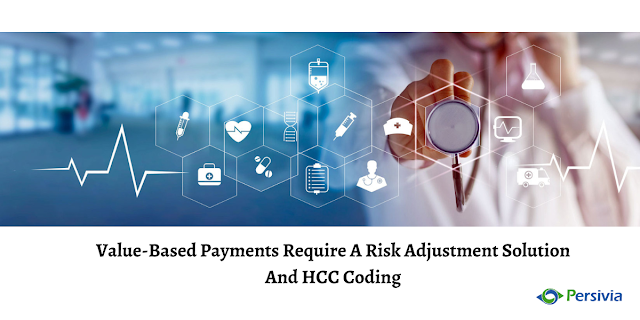Value-Based Payments Require A Risk Adjustment Solution And HCC Coding
The Centers for Medicare and Medicaid Services (CMS) implemented the Risk Adjustment (RA) method and Hierarchical Condition Category (HCC) coding in 1997 to aid in payment distribution. This Risk Adjustment Solution and HCC Coding approach, which was implemented in 2003, detects people with serious or chronic disease and provides a risk factor score to the individual based on a combination of the individual's health status and demographic characteristics.
The Importance of ICD-10 for Risk Adjustment
Individuals' medical problems are recognized using International
Classification of Diseases–10 (commonly known as ICD–10) diagnoses provided on
incoming claims by providers. In the Risk Adjustment model, there are almost
9,000 ICD-10 codes that convert to 79 HCC codes.
To support the reported diagnosis, CMS needs evidence from the
person's health record by a certified healthcare practitioner. Documentary
evidence must demonstrate the presence of the medical problem and show the
provider's diagnosis and management strategy. This must happen at least once a
year for CMS to acknowledge that the person still has the health
condition.
HCC coding stands for hierarchical condition
category
The Hierarchical Condition Category; HCC Coding Solution is
a risk-adjustment approach that was initially meant to analyze and predict
health care expenses for patient populations. The Centers for Medicare &
Medicaid Services (CMS) HCC approach was launched in 2004 and is growing more
popular as the healthcare industry transitions to value-based payment systems.
To give risk ratings to a patient or group of patients, HCC
Coding Solution uses ICD-10-CM coding. Every HCC has an ICD-10-CM code
assigned to it. All health insurance companies employ HCC coding, together with
demographic information such as age and gender, to grant patients a risk
adjustment factor (RAF) score. Insurance companies are leveraging algorithms to
anticipate expenditures based on a patient's RAF score. A patient with few
major health concerns, for example, may be anticipated to have typical medical
expenses for a particular time period. A patient with several chronic diseases,
on the other hand, is likely to have higher health-care usage and medical
expenses.
Risk Adjustment and VBP
Risk Adjustment Solution is currently playing an essential role in payment administration,
which is especially beneficial in value-based payment systems (VBP). When risk
scores do not adequately represent patient complexities, patients may appear to
have had higher expenses and worse quality outcomes than predicted. In some
payment structures, this can drive a practice to fall short of performance and
cost-effectiveness objectives, thus missing out on shared savings
opportunities.




Comments
Post a Comment